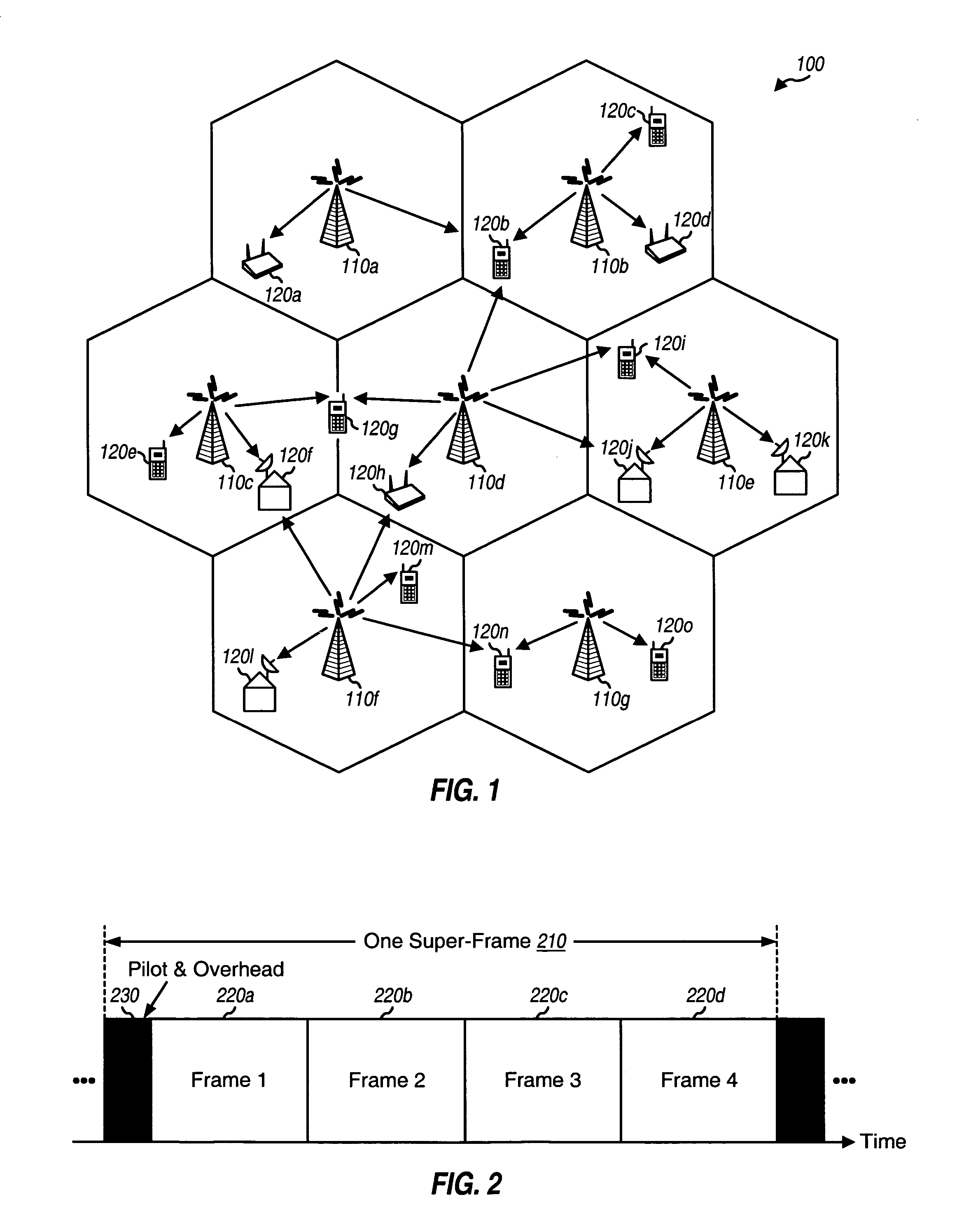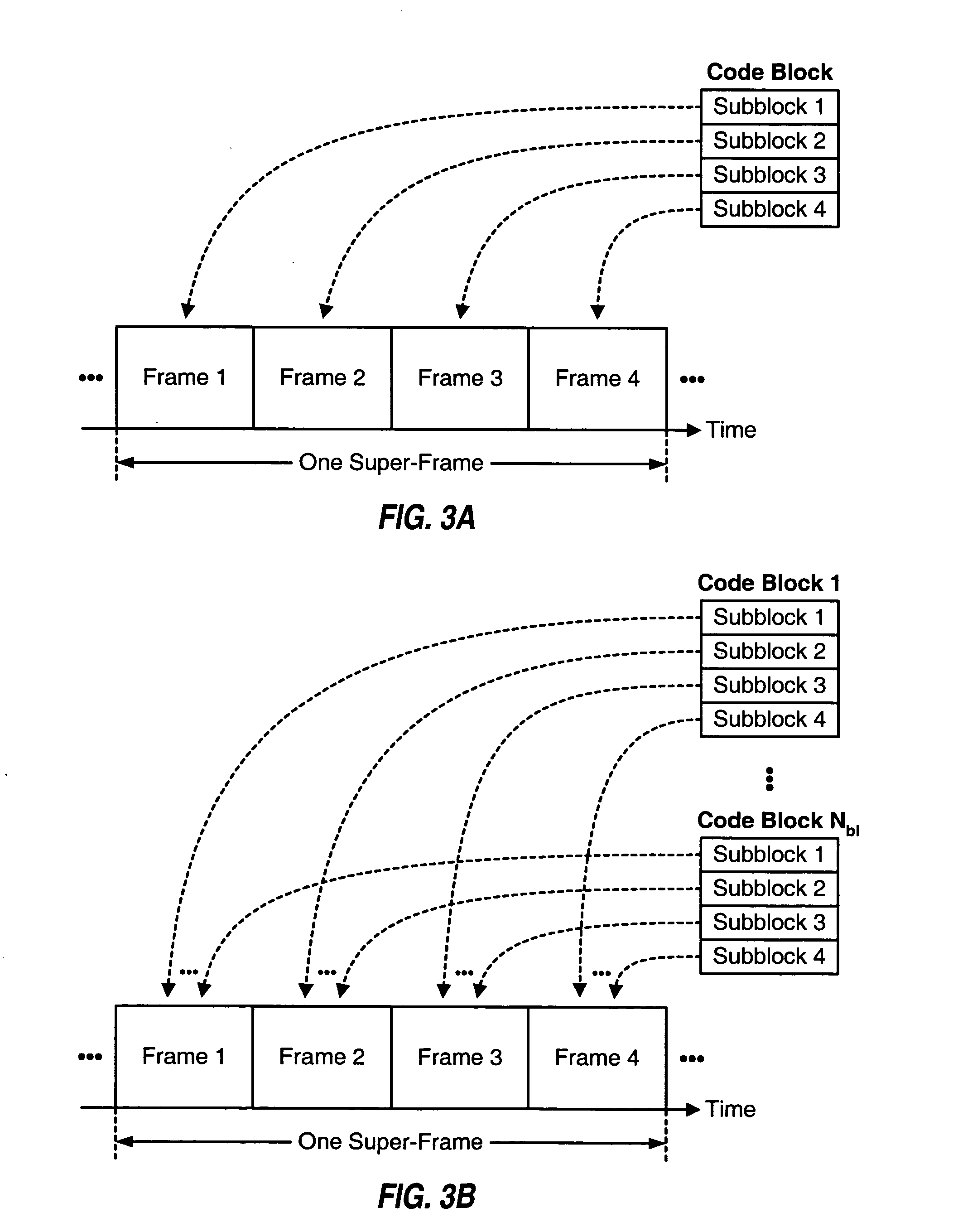Multiplexing and transmission of multiple data streams in a wireless multi-carrier communication system
a multi-carrier communication and multi-carrier technology, applied in the field of communication, can solve the problems of shortening the “on” time of wireless devices, consuming significant amounts of power, and continuing demodulation and decoding of high-rate composite streams, and achieves power-efficient and robust reception of individual data streams.
- Summary
- Abstract
- Description
- Claims
- Application Information
AI Technical Summary
Benefits of technology
Problems solved by technology
Method used
Image
Examples
Embodiment Construction
The word “exemplary” is used herein to mean “serving as an example, instance, or illustration.” Any embodiment or design described herein as “exemplary” is not necessarily to be construed as preferred or advantageous over other embodiments or designs.
The multiplexing and transmission techniques described herein may be used for various wireless multi-carrier communication systems. These techniques may also be used for broadcast, multicast, and unicast services. For clarity, these techniques are described for an exemplary multi-carrier broadcast system.
FIG. 1 shows a wireless multi-carrier broadcast system 100. System 100 includes a number of base stations 110 that are distributed throughout the system. A base station is generally a fixed station and may also be referred to as an access point, a transmitter, or some other terminology. Neighboring base stations may broadcast the same or different content. Wireless devices 120 are located throughout the coverage area of the system. ...
PUM
 Login to View More
Login to View More Abstract
Description
Claims
Application Information
 Login to View More
Login to View More - R&D
- Intellectual Property
- Life Sciences
- Materials
- Tech Scout
- Unparalleled Data Quality
- Higher Quality Content
- 60% Fewer Hallucinations
Browse by: Latest US Patents, China's latest patents, Technical Efficacy Thesaurus, Application Domain, Technology Topic, Popular Technical Reports.
© 2025 PatSnap. All rights reserved.Legal|Privacy policy|Modern Slavery Act Transparency Statement|Sitemap|About US| Contact US: help@patsnap.com



